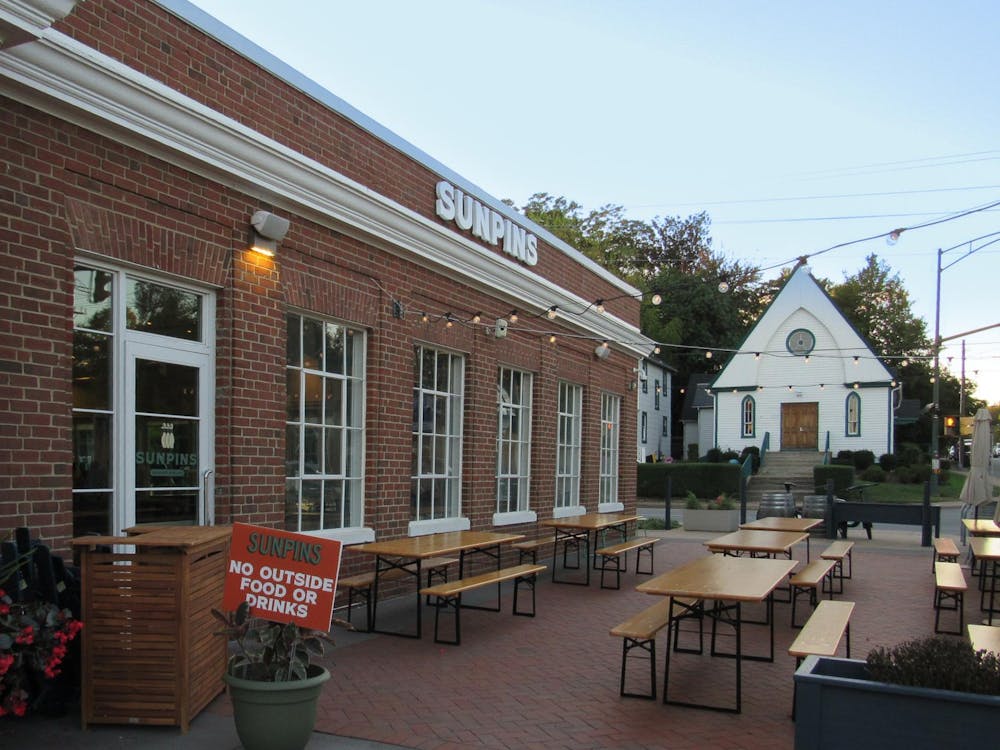One doesn't even have to read The Cavalier Daily, but merely glance at its front page headlines to see that there is now a great controversy surrounding the University's admissions policies.
Is it in the best interest of the University to consider race during the selection process? For those who believe it is not, how should the University compensate to ensure the diversity of the student body? Unfortunately, the University community probably will never reach a consensus on these issues. The debate is a serious one; and it is not new.
The University has a very distinctive Southern heritage. Were it not for the strong sense of pride on Grounds, our school probably would not have the enrollment it does. Still, running parallel to those early decades of tradition was an undercurrent of racism and segregation.
In 1935, Alice C. Jackson became the first black applicant to the University when she was admitted into the French M.A. program. Her application was denied because of her race and what the administration defined as "other good and sufficient reasons."
Upon receiving her appeal, the administration feared a lawsuit by the NAACP. In an effort to avoid this suit and maintain segregation, they petitioned the General Assembly to allow black students denied admission to the University to attend an out-of-state institution at the University's expense. Over 400 students participated in this system, which was not unique to Virginia.
Fifteen years later, Gregory Haines Swanson became the first black student to enter the University when he won a Virginia Supreme Court decision and entered the School of Law -- against the recommendations of the Board. It is perhaps more proper to say that Swanson entered the area but not the community, because University students and nearby residents were so unreceptive that he was forced to live at the Carver Inn.
Sarah Boyle, the wife of a faculty member who supported Swanson, also was ostracized by the community. After Swanson finally withdrew because of racial discrimination, Boyle continued to support educational integration in Charlottesville. In 1956, the Ku Klux Klan burned a cross on the lawn of her home.
Fortunately for the black community at the University and for students today, more brave individuals soon followed in Swanson's footsteps.
In 1953, Walter Ridley received a doctorate from the Education School, thus becoming the University's first black graduate.
It was five more years, however, before the College admitted a black undergraduate student. In 1958, Leroy Willis arrived at the University, the first student to undergo a full career, graduating with a bachelor's degree in 1962. Although Willis was accepted upon first application and given a full education, his experience was far from that of the white students around him. Many of the establishments on the Corner were still excluding blacks.
As a 1970 Student Council report claimed, "subtle discrimination and outright racism discouraged U.Va.'s few black students from participation in 'college life.'"
Over the next decade, a few followed in Willis's footsteps as the enrollment of black students slowly crept forward.
In 1963, Wesley Harris, a fourth-year Engineering student, moved his belongings into 53 West Lawn, the first black resident of the Academical Village.
Harris's graduation by no means marked the end of his breaking barriers at the University. In the fall of 1968, Harris returned to the University as a professor of aeronautical engineering, the first full time black professor at the school. For over a year prior, the University had black faculty members. They were only hired part time, however, to maintain a wage differential with the white faculty members.
One of these part time employees was Fred T. Stokes, the first black admissions officer. Stokes' hiring came in response to a wave of student demonstrations following the April 4, 1968 assassination of Martin Luther King Jr.
In 1969, black students finally were admitted to the University as a class instead of on an individual basis. That same year, the Black Students for Freedom, the predecessor to the Black Student Alliance, was created.
Finally, in 1976 the Office of African American Affairs was opened to ensure that black students were not forgotten and were given an equal opportunity to succeed.
The fight is ongoing, but the black community is continuing to overcome obstacles in education. Today's diverse student body has many individuals to thank for paving the way for minorities at the University.
Adam Reno is a second-year College student and the University Guide Service Historian.






